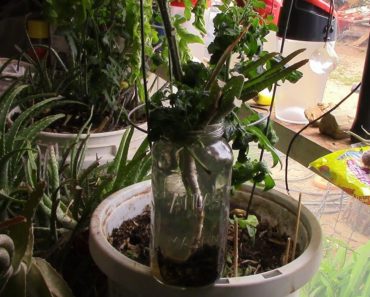Food and water are your main concerns during an SHTF event no matter how you look at it.
Your survival chances are also determined by the amount of food and water you managed to store. Storing these supplies is, in fact, one of the basics of emergency preparedness, and you need to take care of such tasks properly.

Establishing how much food and water one
needs to store for proper survival is most times, a difficult task for most
folks out there. However, this should be an easy-going process if you follow a
few simple rules.
Any food and water storage begins with establishing how many people will be using those supplies during a crisis. If you have figured out the numbers, you are ready to begin with the next logical step. The one that requires you to estimate how much food and water you should store depending on the storage capacity you have available in your home.
FEMA recommends having a minimum of three
day supply of food and water, but most Americans don’t have those resources in
their homes. Sure, they might stretch their readily-available supplies if
needed, but that doesn’t mean they will enjoy proper nutrition. Even those that have a week’s worth of
supplies will not last long and will depend on others to continue the fight to
survive another day.
Figuring out the caloric intake for your family
If you pay attention during your grocery
shopping trip, you will notice that almost all commercially prepared food has a
label indicating the serving size. Folks assume that such information is all it
takes to build up a survival pantry. However, this is a wrong approach, and one
will run out of food faster than expected if using this strategy.
If you want to do things properly, you
should estimate the caloric intake needed for each of your family members
rather than counting on the serving sizes.
Each person has a different caloric need
based on their gender, age, and general activity. It is also worth mentioning
that the weather is an important factor when you calculate the calorie intake
of a human. If you live in a region that is prone to harsh winters and you are
not a couch potato, you should probably double the calories you consume.
For hard manual labor such as digging,
chopping wood, carrying heavy objects, or even walking for miles, some people
will require 3,000 -4,000 calories easily.
Here are the general, recommended caloric needs:
Children between age 2 and 3
If the child is sedentary, the caloric
intake should be between 1,000 and 1,200 calories. For moderately active and
active children, the caloric intake should be between 1,000 and 1,400 calories.
Female
Age
4-8
Sedentary type: 1,200-1,400 Moderately
active type: 1,400-1,600 Active type: 1,400-1,800
Age 9-13
Sedentary type: 1,400-1,600 Moderately
active type: 1,600-2,000 Active type: 1,800-2,000
Age
14-18
Sedentary type: 1,800 Moderately active type:
2,000 Active type: 2,400
Age
19-30
Sedentary type: 1,800-2,000 Moderately
active type: 2,000-2,200 Active type: 2,400
Age
31-50
Sedentary type: 1,800 Moderately active
type: 2,000 Active type: 2,200
Age
51+
Sedentary type: 1,600 Moderately active
type: 1,800 Active type: 2,000-2,200
Male
Age
4-8
Sedentary type: 1,200-1,400 Moderately
active type: 1,400-1,600 Active type: 1,600-2,000
Age
9-13
Sedentary type: 1,600-2,000 Moderately
active type: 1,800-2,000 Active type: 2,000-2,600
Age
14-18
Sedentary type: 2,000-2,400 Moderately
active type: 2,400-2,800 Active type: 3,000
Age
19-30
Sedentary type: 2,400-2,600 Moderately
active type: 2,600-2,800 Active type: 3,000
Age
31-50
Sedentary type: 2,200-2,400 Moderately
active type: 2,400-2,600 Active type: 2,800-3,000
Age
51+
Sedentary type: 2,000-2,200 Moderately
active type: 2,200-2,400 Active type: 2,400-2,800
Once you figured out how many calories you
should consume per day based on your activity level, you have to prepare meals
so that every member of your family gets his or her proper nutrition. To
provide a balanced diet, you should make sure that all major nutrients are
provided with each meal.
This may sound complicated, but you should
start by keeping in mind that a human body needs five categories of
ingredients: fat, protein, carbohydrates, fiber, and water.
Fiber and water are important for your health
and well-being, and some may consider this as an independent addition. The
human body cannot function properly without an adequate intake of protein, fat,
and carbohydrates.
The recommended intake of protein, fat, and carbs:
Young children (of age between 1 – 3 years):
- Protein: 5 -20%, Fat: 30 – 40%, Carbs: 45-65%
Older children (of age between 4 – 18 years):
- Protein: 10 -30%, Fat: 25 – 35%, Carbs: 45-65%
Adults (19 years and older):
- Protein: 10 -35%, Fat: 20 – 35%, Carbs: 45-65%
These numbers are important to be
remembered because an imbalanced diet will cause health problems and will
trigger appetite fatigue faster.
A general rule of food storage states that
one should only store foods his family eats, and common sense goes a long way
here. Buy only the food your loved ones are accustomed to eating, the type of
food you used daily. Never go for foods that you think and hope they will eat.
An emergency situation is not a suitable experience to taste the culinary taste
of your family.
Rather than picking everything you see on
the grocery shelves, look at your favorite recipes and figure out a way to
adapt or reinvent them with the items you store in your survival pantry.
If you want to settle on the ratios to
provide a balanced diet, these figures should help:
Protein: 15% of your pantry supplies. Here you can have items such as meat,
peanut butter, and assorted nuts.
Grains: 35% of your pantry supplies. Here you can have items such as cereals, pasta, rice, and even bread.
Vegetables: 20% of your pantry supplies. Here you can have items such as corn,
carrots, peas, and other vegetables.
Dairy: 15% of your pantry supplies. Here you can have items such powdered
milk and hard cheese.
Fruits: 15% of your pantry supplies. Here you can have all sorts of canned
and dehydrated fruits.
Requirements for a one-year survival pantry
When starting with long-term food storage,
many will get confused and get lost in the numbers. It is one of the most
difficult things for new preppers to deal with.

Although most of them understand that their pantry needs to include basics such as beans, grains, fats, dairy items, baking ingredients, and various spices, figuring out the actual numbers is the real challenge. One important thing you need to remember is that a human adult needs a pound of dry food per day in order to survive.
Dry foods such as legumes, sugar, pasta,
rice, and dehydrated vegetables or fruits are constantly on the grocery
shopping lists of preppers. Here is what a one-year emergency pantry
contained, which should be more than enough to feed a family of two:
- 25 pounds of flour
- 50 pounds of rice
- 25 pounds of pasta
- 120 pounds of whole-grain wheat
- 25 pounds of oats
- 15 pounds of millet
- 30 pounds of dried beans
- 5 pounds of lentils
- 5 pounds of split peas
- 25 pounds of cornmeal
- 10 pounds of soybeans
- 5 pounds of peanut butter
- ½ gallon of dehydrated eggs
- 10 pounds of textured vegetable protein (TVP)
- 4 pounds baking powder
- 4 pounds baking soda
- 40 pound of sugar
- 10 pounds of honey (I store a lot of honey as I use it for other purposes as well)
- 4 pounds molasses
- 4 pounds jam
- 40 quarts of vegetable oil
- 50 pounds dry milk
- 10 pounds salt
- 2 pounds yeast
- 3 gallons of vinegar
- 10 pounds dry soup mix
- A large variety of spices and seasonings
Storing water
When it comes to storing water, this is a
much easier task compared to storing food. However, there are some things you
have to remember when calculating how much water should be enough for your
family’s needs.
To have proper hydration, you should drink
half of your body weight in water ounces, in normal conditions. For example, if
you weigh 160 pounds, half of that is 80, so that means you should drink at
least 80 ounces of water each day. Most survival experts recommend keeping at
least one gallon of water for each person per day. Said water should be used
for both drinking and sanitation purposes.
I recommend going with one gallon and a
half of water for each family member. This is how I’m doing it, and I’ve
adjusted my water needs because heat waves may hit our area during the year.
One thing I have to stress when it comes to
water storage is that every serious prepper should not concentrate their
efforts on just storing water. You should learn how to find additional sources
of water, both inside and outside your home, and also have the means to make
that water drinkable.
Also, learning how to build a water
generator is the best backup plan you can have for your water needs. I
guarantee you will be way ahead of your neighbors during a water shortage.
Concluding:
The information provided in this article should help both new and experienced preppers figuring out how much food and water needs to be stored. I remember, I had a hard time when starting with all of this, and I hope you will figure out the right numbers for you much easier after reading this article.



























